1968(Edit)
Dial-a-Poem
Description :(Edit)
Having debuted in 1968 at the Museum of Modern Art, it is a Who’s Who of late 20th-century American poetry that became a series of LPs issued by his multimedia poetry company Giorno Poetry Systems.
In 1968, inspired by a phone call to William Burroughs, Giorno formed an initiative called "Dial-A-Poem." This provided easy and direct access for Americans to a counter-cultural poetic movement. Allen Ginsberg, William Burroughs, Brion Gysin, Ted Berrigan and Frank O'Hara were among the poets involved in the Dial-A-Poem Poets project.
After having a conversation on the phone with Burroughs in 1968, Giorno initiated the Dial-A-Poem Poets concept, which he claimed would later influence the creation of information services creation over the telephone, such as sports and stock market. Fifteen phone lines were connected with individual answering machines: people would call GPS and listen to a poem they were offered from fragments of various live recordings. Dial-A-Poem, from 1969 on, was very successful, with 9 a.m. to 5 p.m. and 8.30 p.m. to 11.30 p.m. peaks. GPS used a variety of social issues at the time, what with the sexual revolution and the Vietnam War, which would create appeal as well as shock from the reactive community.
Source : Wikipedia, http://en.wikipedia.org/wiki/Giorno_Poetry_Systems
“Contrary to what a lot of people were saying in 1970, in Dial-a-Poem the medium really wasn’t the message. Taken together, these poems act as a type of time capsule of the late 1960s, both personal and political. The poems were not a straightforward account, like calling for the weather report or the time of day. What made them almost ordinary, though, was the very everydayness of the act—dialing the number and listening. Calling a poem on the telephone did not require as much effort as attending a reading or even reading a poem on the page. It was casual. A phone call. The ordinariness of the telephone heightened the impact of the content. Perhaps this is the very fact of information; illumination can’t exist without it.” — (Katie Geha)
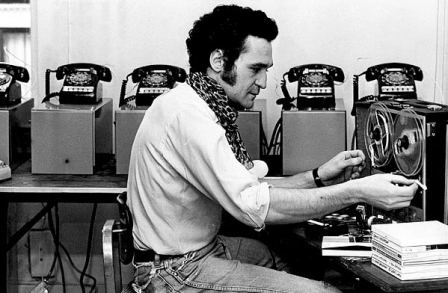
15 phone lines were connected with individual answering machines, people could call and listen to a poem. Many of the poems on Dial-a-poem were by hipster New York poets that Giorno had recorded like Allen Ginsberg, Anne Waldman, Ted Berrigan, the East Village crowd. Dial-a-poem was a big hit. In the first five months over a million calls came in and suddenly dialing a poem was assigned as homework in some New York City schools. But not all the poems were considered appropriate for school kids.The Board of Education in New York City received complaints about Dial-a-poem, lawyers got involved; John Giorno won the legal battle but he lost funding and you couldn’t dial a poem anymore.
Dial-a-Poem, Giorno’s New York City–wide poetry installation instigated in 1968, used the technology of the telephone, a plastic handheld thing, to relay poetry as if it were simple information. The messages were poems recorded by poets and artists. For a period of about four years, anyone could dial 212.628.0400 on a rotary telephone and hear a poem.
In a time before movie hotlines listed local showtimes, before psychics mapped out the coming year over the telephone, before phone-sex operators greeted lonely people late at night, John Giorno’s Dial-a-Poem offered up poetry for the everyday caller. The program changed regularly; one could make a phone call each day and encounter a different work by a new artist.
This sense of extraordinary ordinariness might have been what appealed to curator—and Frank O’Hara protégé—Kynaston McShine when he included Dial-a-Poem in his groundbreaking exhibition Information, mounted in 1970 at the Museum of Modern Art. The exhibition turned the museum into a laboratory of new technologies. No longer just a pure artistic space reserved for ineffable experience, the galleries in the museum resembled a science fair for the artistically curious. Dial-a-Poem, in this incarnation, existed as 12 telephone lines hooked up to 12 gray boxes that housed the recording devices. The museum visitor would pick up the receiver and hear a voice on the other line, reading a poem. Instant art. — (by Katie Geha, “Become Your Own Yawn” - Information and the Dial-a-Poem Poets — 2011 — http://www.poetryfoundation.org/article/242182 )
Dial-A-Poem Hype
One day a New York mother saw her 12-year-old son with two friends listening to the telephone and giggling. She grabbed the phone from them and what she heard freaked her out. This was when Dial-A-Poem was at The Architectural League of New York with worldwide media coverage, and Junior Scholastic Magazine had just done an article and listening to Dial-A-Poem was homework in New York City Public Schools. It was also at a time when I was putting out a lot of erotic poetry, like Jim Carroll's pornographic "Basketball Diaries," so it became hip for the teenies to call. The mother and other reactionary members of the community started hassling us, and The Board of Education put presssure on the Telephone Company and there were hassles and more hassles and they cut us off. Ken Dewey and the New York State Council on The Arts were our champions, and the heavy lawyers threatened The Telephone Company with a lawsuit and we were instantly on again. Soon after our funds were cut, and we couldn't pay the telephone bill so it ended.
Then we moved to The Museum of Modern Art, where one half the content of Dial-A-Poem was politically radical poetry At the time, with the war and repression and everything, we thought this was a good way for the Movement to reach people. TIME magazine picked up on how you could call David and Nelson Rockefeller's museum and learn how to build a bomb. This was when the Weathermen were bombing New York office buildings. TIME ran the piece on The Nation page, next to the photo of a dead cop shot talking on the telephone in Philadelphia. However, Bobby Seale, Eldridge Cleaver and The Black Panthers were well represented. This coupled with rag publicity really freaked the Trustees of the museum and members resigned and thousands complained and the FBI arrived one morning to investigate. The Museum of Modern Art is a warehouse of the plunder and rip off for the Rockefeller family and they got upset at being in the situation of supporting a system that would self-destruct or self purify, so they ordered the system shut down. John Hightower, MOMA Director, was our champion with some heavy changes of conscience, and he wouldn't let them silence us, for a short while. Then later John Hightower was fired from MOMA and Ken Dewey recently flying alone in a small plane crashed and died.
In the middle of the Dial-A-Poem experience was the giant self-consuming media machine choosing you as some of its food, which also lets you get your hands on the controls because you've made a new system of communicating poetry. The newspaper, magazine, TV and radio coverage had the effect of making everyone want to call the Dial-A-Poem. We got up to the maximum limit of the equipment and stayed there. 60,000 calls a week and it was totally great. The busiest time was 9 AM to 5 PM, so one figured that all those people sitting at desks in New York office buildings spend a lot of time on the telephone, then the second busiest time was 8:30 PM to 11:30 PM was the after-dinner crowd, then the California calls and those tripping on acid or couldn't sleep 2 AM to 6 PM. So using an existing communications system we established a new poet-audience relationship.
Dial-A-Poem began at the Architectural League of New York in January 1969 with 10 telephone lines and ran for 5 months, during which time 1,112,337 calls were received. It continuted at MOMA in July 1970 with 12 telephone lines and ran for 2 and a half months and 200,087 calls were received. It was at The Musuem of Contemporary Art, Chicago for 6 weeks in November 1969 and since then has cropped up everywhere. This was with equipment working at maximum capacity and sometimes jamming the entire exchange. At MOMA, the 12 lines were each connected to an automatic answering set, which holds a pre-recorded message. Someone calling got randomly one of 12 different poems, which were changed daily. There were around 700 selections of 55 poets.
John Giorno, August 1972
Artists :(Edit)
- The Dial-A-Poem Poets, GPS 001-002, 1972
- http://www.johngiorno.net/dialapoem.html
- On this LP of Dial-A-Poem Poets are 27 poets. The records are a selection of highlights of poetry that spontaneously grew over 20 years from 1953 to 1972, mostly in America, representing many aspects and different approaches to dealing with words and sound. The poets are from the New York School, Bolinas and West Coast Schools, Concrete Poetry, Beat Poetry, Black Poetry and Movement Poetry.
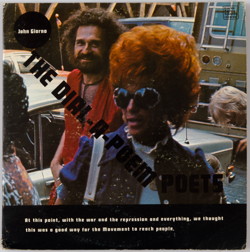 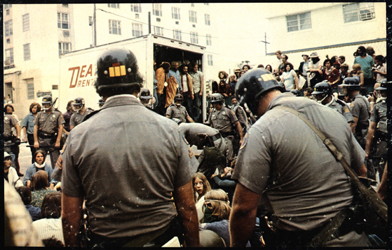 [Front cover hi-rez] | - Allen Ginsberg - Vajra Mantra -Diana De Prima - Revolutionary Letters Nos. 7, 13, 16, 49 -William Burroughs - excerpts from The Wild Boys -Anne Waldman - Pressure, Holy City -John Giorno - Vajra Kisses - Emmett Williams - Duet -Ed Sanders - Cemetery Hill -Taylor Mead - Motorcycles -Allen Ginsberg - Green Automobile 1953 -Robert Creeley - The Messenger for Allen Ginsberg, I Know a Man -Harris Schiff - Poems -Lenore Kandel - Kali -Aram Saroyan - Not a Cricket -Philip Whalen - excerpts from Scenes of Life at the Capital -Ted Berrigan - excerpts from The Sonnets - Frank O'Hara - Ode to Joy, To Hell With It -Joe Brainard - excerpt from I Remember -Clark Coolidge - Small Inventions: Suite V (plurals) secanate, Suite IV -Jim Carroll - excerpts from The Basketball Diaries -John Cage - Mushroom Haiku, excerpt from Silence -Bernadette Mayer - These Stories About After the Revolution -Michael Brownstein - Geography - Brion Gysin - I Am That I Am -John Sinclair - The Destruction of America -Anne Waldman - How the Sestina (Yawn) Works -Heathcote Williams - I Will Not Pay Taxes Until -Dave Henderson - The Louisiana Weekly No. 1, Ruckus Poem Part 1 -Bobby Seale - excerpt from Fillmore East speech -Kathleen Cleaver - excerpt from Fillmore East speech -Allen Ginsberg - Blake Song: Merrily We Welcome in the Year |
- The Dial-A-Poem Poets: Totally Corrupt, GPS 008-009, 1976
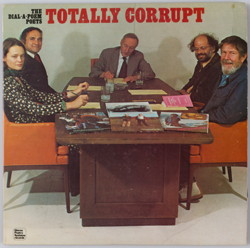 [Front cover hi-rez] | - Charles Bukowski "Cloud Nine", "Neighbourhood Of Murder", "Two Horse Collars", "Christ", "You'll Never Know", "Closing Topless Bars" -Imamu Amiri Baraka "Rockefeller Is Your President And Your Mama Don't Wear No Drawers" and "New York Is Everywhere Big" -William Carlos Williams "Yellow Flower" -William S. Burroughs "When Did I Stop Wanting To Be President" -Sylvia Plath "Daddy" -John Giorno from "Shit, Piss, Blood, Pus And Brains" -Michael McClure -Ed Sanders -Ted Berrigan "Today In Ann Arbor" -John Cage - introduces and reads "Song, Derived from the Journal of Henry David Thoreau" (1976) (6:30). recorded at St. Mark's Church, New York City, on January 1, 1976. -John Cage - "Song" and "Clark Coolidge" (cut up of Variation 5 record) -Jack Briece "62 Mesotics Re Merce Cunningham (33-37)" |
- The Dial-A-Poem Poets: Sugar, Alcohol & Meat, GPS 018-019, 1980
- http://www.johngiorno.net/sugar.html
- Gatefold double LP. A poetry compilation featuring recordings by the following poets: Kathy Acker, Miguel Algarin, Beth Anderson, John Ashbery, Barbara Barg, Regina Beck, Charles Bernstein, Ted Berrigan, William S. Burroughs, William S. Burroughs, Jr., John Cage, Didi Susan Dubelyew, Cliff Fyman, Allen Ginsberg, John Giorno, Daniela Gioseffi, Bernard Heidsieck, Peter Gordon, Bob Holman, Rochelle Kraut, Mitchell Kriegman, Steve McCaffery, Robin Messing, Charlie Morrow, Eileen Myles, The Nuyorican Poets, Miguel Pinero, Ron Padgett, Rene Ricard, Patti Smith, Gary Snyder, Ned Sublette, Paul Violi, Andrei Vosnesensky and Anne Waldman. Cover art by Robert Mapplethorpe.
  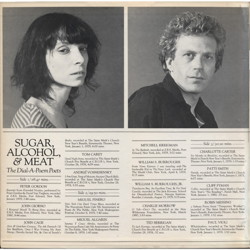 [Front cover hi-rez] [Back cover hi-rez] [Center hi-rez] | - Peter Gordon "excerpt from Extended Niceties" performed with David Van Tieghem -John Giorno "I Resigned Myself To Being Here" -John Cage "Alex & Gretchen Corazzo, The 6th Patriarch Of Zen Buddhism, Once I Was Visiting My Aunt Marge, Dorothy Invited Me, & One Of Suzuki's Books" -Tom Carey "Good Night Irene" -Andrei Vosnesensky "I Am Goya, Song Of Moscow Ancient Church Bells" - Miguel Pinero "New York City Hard Times Blues" -Miguel Algarin "Setenta Y Cinco Abriles" -Mitchell Kreigman "In The Bathtub" -William S. Burroughs "I Was Traveling With The Intolerable Kid On The Nova Lark" from Nova Express -William S. Burroughs Jr. "Translucent Boy, An Excellent Time, & For Neal Cassidy" -Charlie Morrow "O Yeh - Don't Die" -Ted Berrigan "To Jack Kerouac" - Charlotte Carter "Six Months In Brooklyn" -Patti Smith "Parade" -Cliff Fyman "Coffee" -Robin Messing "3 Subway Poems" -Paul Violi "Whalefeathers" -Bob Holman " RAP IT UP" -Allen Ginsberg "C.I.A. Dope Calypso" accompanied by Steven Taylor -Anne Waldman "Lady Tactics" -John Ashbery "Litany" with Ann Lauterbach -Beth Anderson "I Can't Stand It" -Rene Ricard "Rene Ricard Famous At 20" - Barbara Barg "Chicks" -Ned Sublette "Nice Young Mormons" -Kathy Acker "I Was Walking Down The Street" from The Adult Life Of Toulouse Lautrec" -Eileen Myles "Lorna & Vicki" -Barbara Barg "So Fine" with Chassler -Didi Susanm Dubelyew "Who Needs Exercise" -Rochelle Kraut "New Born Sleep" -Gary Snyder "What You Should Know to Be A Poet" -Daniela Gioseffi "Eggs" -Regina Beck "Message From Confucius" -Bernard Heidseick "Canal Street, No. 4" -Charles Bernstein "Wall As" -Steve McCaffery "Viking Log Part 2" with Ted Moses (sax) -Ron Padgett "Zzzzz" |
- The Dial-A-Poem Poets: Life is a Killer, GPS 027, 1982
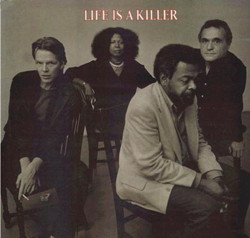 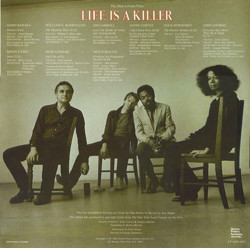 [Front cover hi-rez] [Back cover hi-rez] | - Amiri Baraka "Wailers" -Brion Gysin "Junk" -William Burroughs "The Mummy Piece" -Rose Lesniak "She's So" -Jim Carroll "Just Visiting" (from Book of Nods) -Ned Sublette "Cowboys Are Frequently Secretly" -Jayne Cortez "I See Chano Pozo" -Four Horesmen "The Dreams Remain" -John Giorno "Everyone Says What They Do Is Right" |
- The Dial-A-Poem Poets: Better An Old Demon Than A New God, GPS 033, 1984
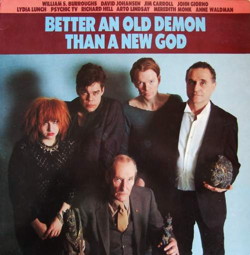 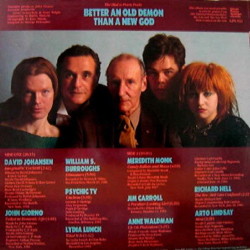 [Front cover hi-rez] | - David Johansen - "Imaginatin' Cocktail" -John Giorno - "Exiled in Domestic Life" -William S. Burroughs - "Dinosaurs" -Psychic TV - "Unclean" -Lydia Lunch - "What it is" -Meredith Monk - "Candy Bullets and Moon" -Jim Carroll - "A Peculiar-Looking Girl" -Anne Waldman - "Uh-Oh Plutonium" -Richard Hell - "The Rev. Hell Gets Confused" -Arto Lindsay - "Alisa" -David Van Tieghem - Out of the Frying Pan -Jessica Hagedorn & The Gangster Choir - Tenement Lover |
- A Diamond Hidden in the Mouth of a Corpse, GPS 035, 1985
- Vinyl Record produced as part of the "Dial-A-Poem Poets" album series. Artists include William S. Burroughs, Hüsker Dü, Cabaret Voltaire, David Johansen, John Giorno Band, Diamanda Galás, Coil, Michael Gira, Sonic Youth, David van Tieghem, Jessica Hagedorn, and The Gangster Choir. Album art by Keith Haring.
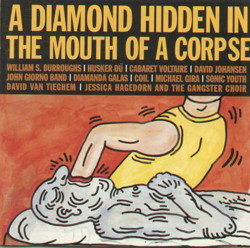 [Front cover hi-rez] | - Husker Du - Won't Change -David Johansen - Johnsonius -John Giorno Band - Scum & Slime -William S. Burroughs - Excerpts from The Western Land: The President, Colonel Bradford, Everyman a God -Sonic Youth - Halloween -Cabaret Voltaire - Dead Man's Shoes -Diamanda Galás - Excerpt from Eyes Without Blood -Coil - Neither His Nor Yours -Michael Gira - Game -David Van Tieghem - Out of the Frying Pan -Jessica Hagedorn & The Gangster Choir - Tenement Lover |
Audio :(Edit)
- http://www.johngiorno.net/dialapoem.html
- http://www.johngiorno.net/gps.html (audio contents of each album)
Documentation :(Edit)
- http://www.huffingtonpost.com/2012/05/22/momas-dial-a-poem_n_1536156.html
A new installation at the Museum of Art in New York, titled, "Dial-a-Poem" brings ecstatic poetry to you online or over the phone at any time of the day or night. Now MoMA is reviving the project as part of the exhibition "Ecstatic Alphabet / Heaps of Language." The show features artists who dismantled words from their meanings and traditions, allowing them to be purely seen and felt. "Dial-a-Poem" brings you a random poem read aloud by its poet; the list of possibles includes Frank O'Hara, William Burroughs, John Ashbery, Deborah Harry, John Cage, Allen Ginsberg, David Byrne and many more. There are four telephones for calling poems at the MoMA, or you can dial the local New York number 1-347-POET001 at any time. You can also listen to poems directly from the "Dial-a-Poem" website : http://www.moma.org/interactives/exhibitions/2012/ecstaticalphabets/dial-a-poem/
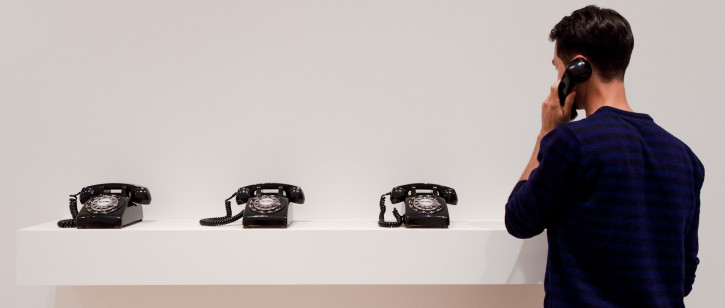
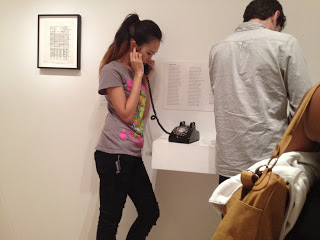
Powered by LionWiki 3.2.5 — Thanks to Adam Zivner — Any material is under copyleft © with in-line & in-text attributions — Hosted by nujus.net NYC